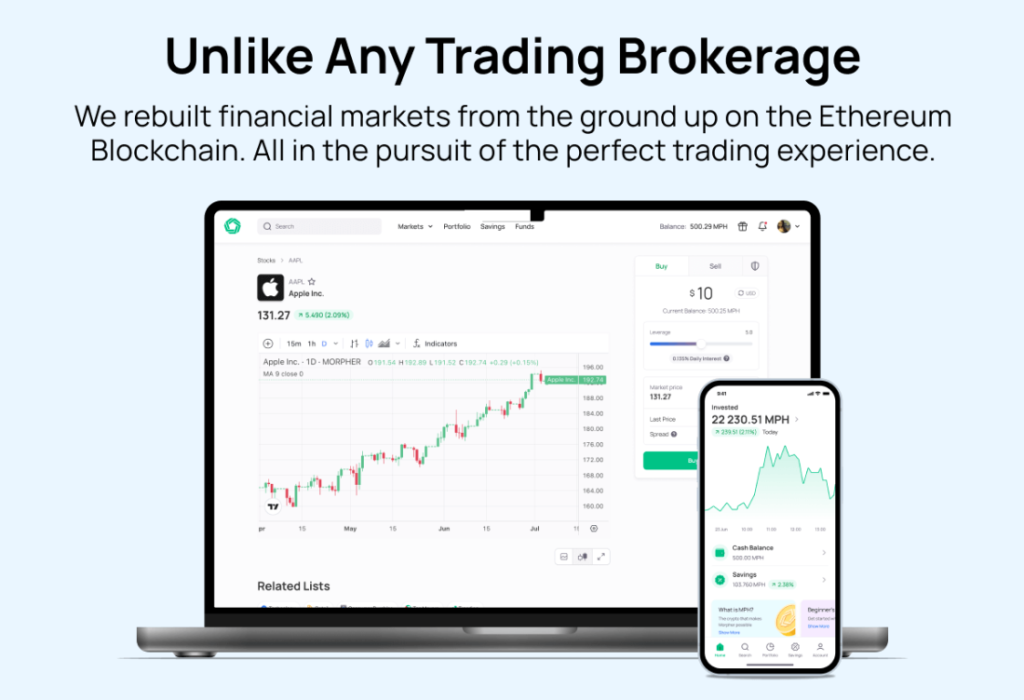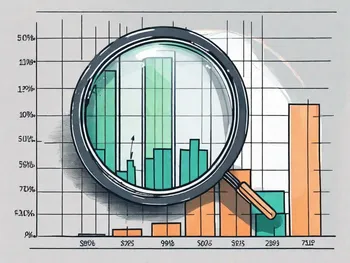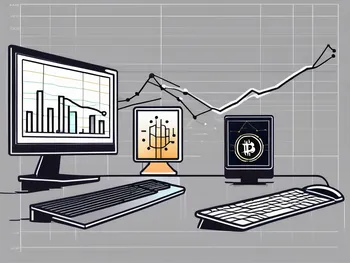Cross Margin vs Isolated Margin: the Key Differences

As a seasoned trader, I understand the importance of margin trading in the cryptocurrency market. But when it comes to leveraging my positions, I always find myself facing the age-old dilemma: cross margin or isolated margin. To help you make an informed decision, let’s dive into the key differences between these two margin types.
Defining Margin Trading
Before we delve into the intricacies of cross margin and isolated margin, let’s start with the basics. Margin trading allows traders to amplify their trading positions by borrowing funds from a platform or exchange. This borrowed capital acts as leverage, enabling traders to potentially earn higher profits than they would with their own funds alone.
The Basics of Margin Trading
Margin trading involves borrowing funds to trade larger positions than what you have in your account. It’s essential to understand that while leverage amplifies your potential gains, it also magnifies your losses. Thus, proper risk management is crucial when engaging in margin trading.
The Role of Margin in Trading
Margin acts as collateral for your leveraged positions. By using margin, traders can enter into larger trades with less capital, maximizing their trading opportunities. However, it’s important to note that margin requirements vary depending on the platform and the specific cryptocurrency being traded.
Now, let’s explore the fascinating world of margin trading in more detail. When you engage in margin trading, you are essentially entering into a partnership with the platform or exchange you are borrowing funds from. This partnership allows you to access a pool of capital that you can use to increase your trading positions.
Imagine you have a keen eye for spotting market trends and believe that a particular cryptocurrency is about to experience a significant price surge. With margin trading, you can take advantage of this opportunity by borrowing funds to buy a larger amount of that cryptocurrency than you would be able to with your own funds alone.
However, it’s important to remember that margin trading is not without risks. While leverage can amplify your potential profits, it can also amplify your losses. If the market moves against your position, the borrowed funds can quickly evaporate, and you may end up owing more than you initially invested.
That’s why risk management is crucial in margin trading. Traders must carefully assess their risk tolerance and set appropriate stop-loss orders to limit potential losses. Additionally, it’s essential to stay informed about market conditions and have a solid understanding of the cryptocurrency you are trading.
Margin requirements play a significant role in margin trading. Different platforms and cryptocurrencies have varying margin requirements, which determine the amount of collateral you need to provide to access leverage. These requirements are typically expressed as a percentage of the total trade value and can vary from platform to platform.
Furthermore, margin trading is not limited to just one type of margin. Cross margin and isolated margin are two common approaches that traders can choose from, each with its own advantages and considerations. Cross margin allows traders to use their entire account balance as collateral, providing more flexibility but also potentially exposing the entire account to losses. On the other hand, isolated margin allows traders to allocate a specific amount of funds as collateral for each trade, reducing the risk of liquidation but also limiting the overall trading capacity.
As you can see, margin trading is a powerful tool that can enhance your trading opportunities, but it requires careful planning, risk management, and a deep understanding of the market. By leveraging borrowed funds, traders can amplify their positions and potentially achieve higher profits. However, it’s crucial to approach margin trading with caution and always be aware of the associated risks.
Introduction to Cross Margin
Let’s explore cross margin, one of the most common margin types used by traders. Cross margin utilizes the total equity in your account to support your open positions. In other words, all the funds in your account are available for use as margin for all of your open trades.
The Concept of Cross Margin
Cross margin takes a holistic approach to margin trading. Instead of allocating specific collateral to individual trades, it uses your entire account balance as margin. This means that gains from profitable trades can offset losses from trades that go south.
Benefits of Using Cross Margin
One advantage of cross margin is that it allows traders to take on larger positions without the need for additional collateral. This can be particularly useful in volatile markets where quick fluctuations can lead to substantial gains or losses. Additionally, cross margin can provide a buffer against liquidation, as long as the total equity in your account remains above the liquidation threshold.
Understanding Isolated Margin
Now, let’s turn our attention to isolated margin. While cross margin takes a broader approach, isolated margin focuses on individual trades, ring-fencing your margin for each specific position.
The Principle of Isolated Margin
In isolated margin trading, each position is treated independently, with its own margin requirement. This means that the margin allocated to a particular trade is the sole collateral for that trade. As a result, profitable trades cannot offset losses from other positions.
Advantages of Isolated Margin
One of the main advantages of isolated margin is that it offers enhanced risk management. By segregating your margin for each position, you can limit potential losses to a specific trade, preventing them from spilling over into your other positions. This can be particularly useful when managing a portfolio with multiple, unrelated trades.
Key Differences Between Cross Margin and Isolated Margin
Now that we understand the core concepts of cross margin and isolated margin, let’s highlight their key differences in two crucial areas: risk management and profit potential.
Risk Management: Cross Margin vs Isolated Margin
Cross margin spreads your risk across all positions, allowing gains from profitable trades to offset losses from others. On the other hand, isolated margin provides a safety net, preventing potential losses from one position impacting the others. Choosing the right margin type depends on your risk tolerance, trading strategies, and market conditions.
Profit Potential: Cross Margin vs Isolated Margin
When it comes to profit potential, cross margin offers the advantage of leveraging your total equity, potentially amplifying gains from multiple positions. In contrast, isolated margin limits your profit potential to individual trades, as gains from one position cannot offset losses in another. Therefore, if you are confident in the performance of a specific trade, isolated margin may be the better option.
Choosing Between Cross Margin and Isolated Margin
Now that we’ve explored the differences between cross margin and isolated margin, how do you choose which one is right for you? Here are some factors to consider:
Factors to Consider When Choosing a Margin Type
- Your risk appetite and tolerance
- The volatility of the market you are trading in
- Your trading strategy and approach
- The size and diversity of your portfolio
- Your familiarity with each margin type and its implications
Making an Informed Decision
Ultimately, the choice between cross margin and isolated margin depends on your individual preferences, risk management strategy, and trading goals. Remember that margin trading carries inherent risks, and it’s vital to only trade with funds you can afford to lose.
As an expert trader, I’ve had my fair share of experiences with both cross margin and isolated margin. I vividly remember a time when I chose cross margin for a trade, leveraging my entire portfolio. While this decision offered the potential for larger gains, it also magnified my losses when the market took an unexpected downturn. This valuable lesson taught me the importance of proper risk management and understanding the nuances of different margin types.
Frequently Asked Questions (FAQ)
Let’s recap the main points about cross margin and isolated margin:
What is margin trading?
Margin trading involves borrowing funds to trade larger positions than what you have in your account, boosting profit potential but also magnifying losses.
What is cross margin?
Cross margin uses your entire account balance as margin for all your open trades, spreading risk across positions.
What is isolated margin?
Isolated margin allocates specific collateral to individual trades, ring-fencing margin for each position to prevent losses from spilling over.
How do cross margin and isolated margin differ in risk management?
Cross margin spreads risk across all positions, while isolated margin provides a safety net, limiting potential losses to individual trades.
Which margin type offers higher profit potential?
Cross margin leverages your total equity, potentially amplifying gains from multiple positions, while isolated margin limits profit potential to individual trades.
By considering your risk appetite, market conditions, trading strategies, and portfolio composition, you can make an informed decision about whether cross margin or isolated margin suits your trading style. Remember, becoming a successful margin trader takes practice, discipline, and continuous learning.
Ready to take your trading to the next level with the flexibility of cross margin and isolated margin? Look no further than Morpher, the revolutionary trading platform that empowers you with zero fees, infinite liquidity, and up to 10x leverage. Whether you’re interested in stocks, cryptocurrencies, forex, or even niche markets like NFTs, Morpher’s blockchain technology offers a unique trading experience with fractional investing and the ability to short sell without interest fees. Plus, with the Morpher Wallet, you maintain complete safety and control over your funds. Sign Up and Get Your Free Sign Up Bonus today to transform your investing journey with Morpher.

Disclaimer: All investments involve risk, and the past performance of a security, industry, sector, market, financial product, trading strategy, or individual’s trading does not guarantee future results or returns. Investors are fully responsible for any investment decisions they make. Such decisions should be based solely on an evaluation of their financial circumstances, investment objectives, risk tolerance, and liquidity needs. This post does not constitute investment advice.

Painless trading for everyone
Hundreds of markets all in one place - Apple, Bitcoin, Gold, Watches, NFTs, Sneakers and so much more.

Painless trading for everyone
Hundreds of markets all in one place - Apple, Bitcoin, Gold, Watches, NFTs, Sneakers and so much more.









